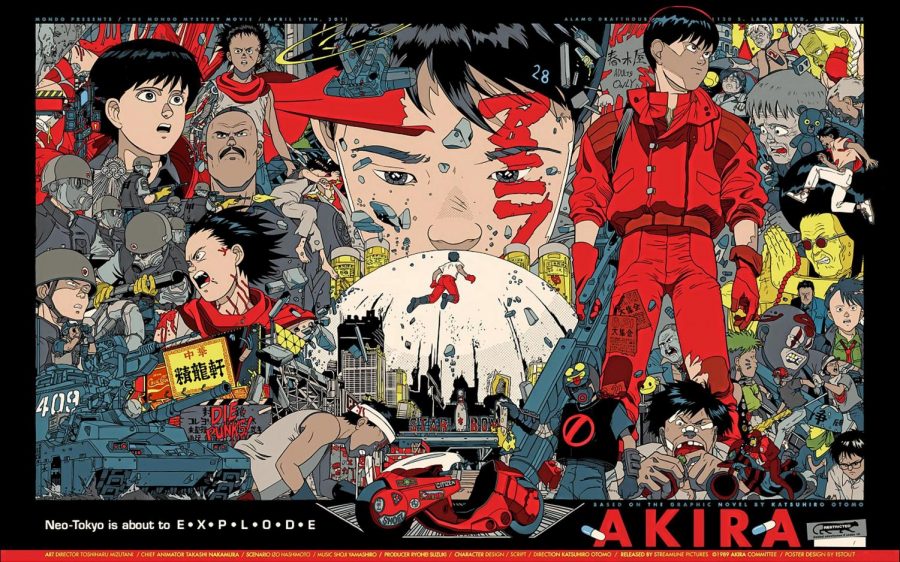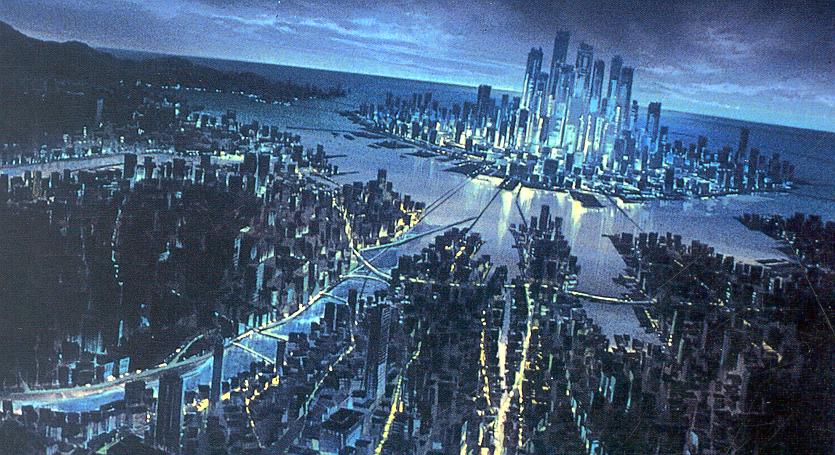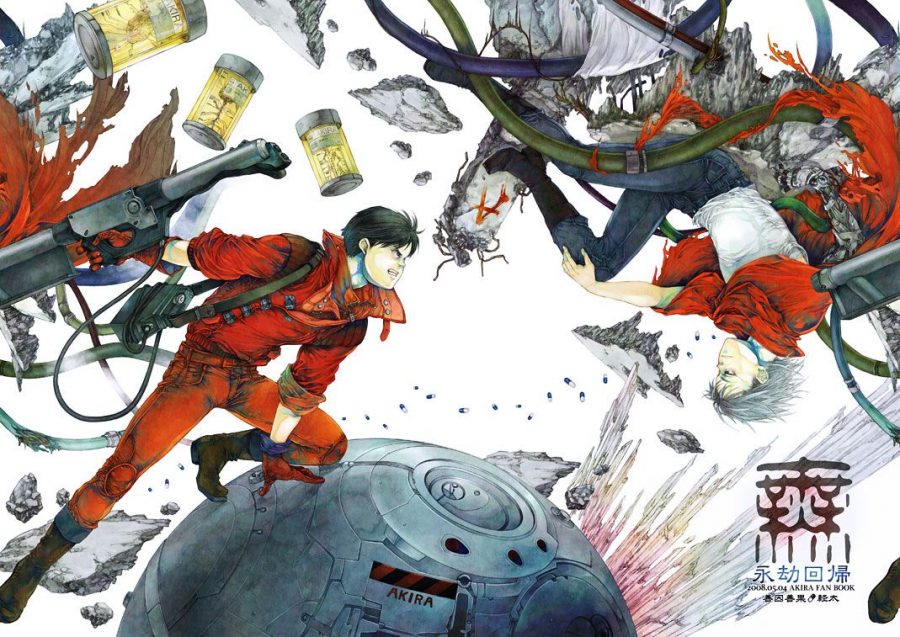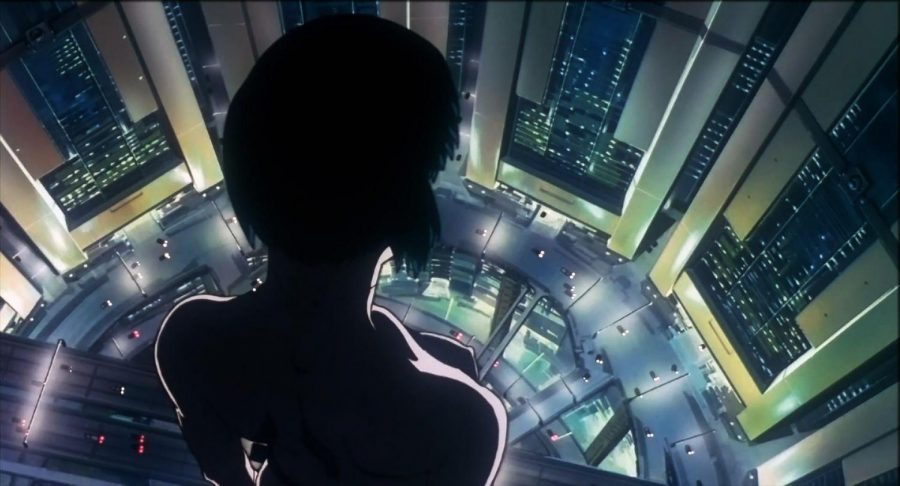Storytelling through Sound: Akira and Ghost in the Shell
One of the most underrated music genres, if it can even be called one, is movie soundtracks. Now, I say that because movie soundtracks are usually a collage of musical genres and styles, versus a collection of songs that fit the same genre. Movie soundtracks, instead, are made up of songs that belong to certain scenes within the movie and serve to strengthen their emotional impact. A lot of the nostalgia for specific movies, especially anything made by Disney, can be attributed to great soundtracks that touch the hearts of millions long after the film leaves theaters. These soundtracks heighten the creative and emotional flair of a film, as well as further developing the movie’s themes.
There is a vast variety of fantastic Western movie soundtracks, such as Star Wars, Inception, Gladiator, The Dark Knight Rises, to name a few. And there is an equally vast variety of fantastic, and often unappreciated, Eastern movie soundtracks, or, more specifically in this case, anime movie soundtracks. Chief among them are Akira (1988) and Ghost in the Shell (1995).

Akira
Akira’s story and themes can be understood through its soundtrack alone. From the fast pace tempo of “Kaneda’s Theme” to the haunting, apocalyptic “Tetsuo,” each song has a story to tell. Also, it’s worth noting that quite a few songs have a length of ten minutes or longer, which gives them plenty of narrative breathing room.
I think Akira‘s finest example of auditory storytelling is “Requiem,” which starts with loud, reverb-soaked drums playing in a slow rhythm and the occasional bell sound, which is synonymous with Akira and Tetsuo. After the drums, a sweeping choir begins singing. The choir provides a cathartic release from the tension created by the drums, and the listener can feel peace washing over them. On-screen, this is represented by Akira’s awakening and the ball of energy that is slowly devouring Tetsuo and the Olympic Stadium. Then, the choir stops, and the same organ from “Tetsuo” begins to frantically play in the background as Tetsuo fights against Akira’s power. This smoothly transitions into a slower, calmer organ solo as Kaneda enters the sphere of energy. Finally, as more and more visions of Tetsuo’s past flit across the screen, the choir and various kalimbas and tribal drums play in the background. The drums fade away, leaving the choir to shine on its own as Tetsuo and Kaneda find their peace, and Akira is liberated at last.
Akira’s songs are masterfully integrated into the greater story and film. Not only do they serve to enhance the underlying emotions of a scene, but they practically are the scene itself. The listener can envision each scene through its corresponding song alone. Also, I enjoyed how each song utilized a wide variety of instruments and was organized in a way that gave each instrument a spot in the limelight. Akira laid the musical groundwork for the several other ground-breaking anime movies that came after it. One of its greatest successors is Ghost in the Shell.

Ghost In The Shell
Released 7 years later, Ghost in the Shell became an instant classic when it hit the big screen in 1995. The film cemented itself in the canon of science fiction anime through its inquiry into the relationship between humans and machines. Central to this theme of human and machine interaction, as you might expect, is the music of Ghost in the Shell. It is a mosaic of classical instruments and vintage synthesizers. The harmony between man and machine that underlies the society shown in the movie is best shown by the song “Making of a Cyborg.”
As the opening credits scroll across the scene, a gentle sleigh bell rings out before a female choir begins singing. Tanto drums accentuate the syllables of the choir and provide a powerful, slow-tempo rhythm. (Quick little side note: the choir’s harmonies were actually inspired by Bulgarian folk singing.) A new cyborg body is being made in a process not too different from birth. As the cyborg’s body travels through various ducts during its development, a dull synthetic drone can be heard in the background, which creates a sense of power and finality. When the Major finally awakens in her room, all that is left is the drums and the bell. These instruments carry on the same rolling rhythm but are now accentuated by a drum roll. The song fades away as the Major leaves her darkened apartment, born anew.
I think one of the greatest parts of “Making of a Cyborg” is its ability to convey the complex themes of the movie’s plot. The symbiosis of human and machine can be heard in the soundtrack because it fuses classical instruments and percussion to the synthesizers and audio effects, such as reverb and delay, of the 90s. This is shown countless times in songs such as “Virtual Crime,” “Nightstalker,” and “Floating Museum.” Ghost in the Shell’s soundtrack is a magnificent ode to both the roots of Japan’s musical history and the sound of contemporary music. It serves to point out a rather poignant contrast between the hyper-advanced technology of 2029’s New Port City and its human inhabitants.
Comparisons
Since these two movies were released in such a short span of time, there are some striking similarities between their soundtracks. For instance, they both utilize a blend of traditional Japanese instruments, such as the koto, taiko, and kagura Suzu, and synthesizers. Also, both soundtracks contribute to the overall themes of each movie. Akira emphasizes the themes of destruction and creation, while Ghost in the Shell emphasizes the symbiosis of man and machine. Finally, both soundtracks seem to place an emphasis on slow, hard-hitting rhythms, specifically in regards to the drums. It’s important to note that Akira likely heavily influenced the soundtrack of Ghost in the Shell, which makes sense, given the similarity in genre and audience.
In my humble opinion, the biggest difference between the two films lies in their replayability. What do I mean by this? Replayability is the measure of how much a song can be replayed and listened to outside of its original context. For me, at least, Ghost in the Shell‘s soundtrack has the edge here. I’ve written countless college essays and supplements to “Nightstalker” and “Floating Museum” alone. The soundtrack of Ghost in the Shell has a reflective and calming presence to it that helps with focus. That isn’t to say that Akira doesn’t also have songs with great replayability, but it is worth noting that a lot of songs are very specific to the scenes of Akira. Thus, they lose something when played away from the film. Again, this doesn’t mean that one soundtrack is better than the other; it is merely an observation.

The Sound Effects
Since I’m covering the soundtracks of Akira and Ghost in the Shell, I might as well talk about their sound effects. For every bullet fired, wall crushed, and machine operated, there is a crisp sound effect behind it. One of the most interesting parts of creating sound effects, especially for science fiction, is their goal. In essence, they are trying to create sounds for things that don’t yet exist. How would Kaneda’s laser gun actually sound in real life? How would the Major’s scanners sound if they existed? I think that both films do a fantastic job of answering these questions. Also, I appreciate the oomph that a lot of the sound effects add to bullets, punches, and explosions. It draws the listener in and really solidifies just how hard an impact was. Finally, the sound effects create a futuristic atmosphere that is at times both familiar and alien.
Recommendations
The soundtracks of both Akira and Ghost in the Shell were inspired by, and in turn influenced, a variety of other movies and anime soundtracks since their respective releases. Thus, I’d like to recommend the following soundtracks:
- Blade Runner and Blade Runner 2049
- Ghost in the Shell 2: Innocence
- Hyper Light Drifter
- Full Metal Alchemist: Brotherhood
- Any OST by Yoko Kanno [Ed. Note: The Cowboy Bebop OST in particular is fantastic.]
Conclusion
I think that movie soundtracks will always be an essential part of any film, including anime. They are often underrated and unappreciated by critics and viewers alike and don’t get the recognition they deserve. Yet they complete the immersion of the movie as they transport viewers through dystopian landscapes and vibrant cities. It’s safe to say that the majority of classic movies would feel barren without them. The next time you watch a movie, listen a little closer. You might just find a new story lurking beneath the surface.
Also, make sure to check out Sam Topa’s article on the cinematic comparisons between Akira and Ghost in the Shell.
